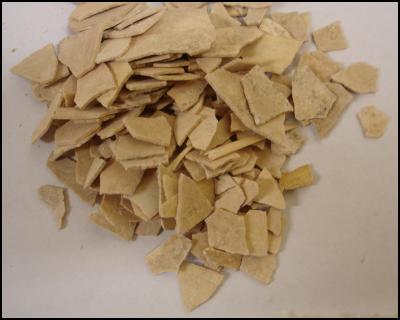Ancient DNA breakthrough boosts moa research
Wednesday 10 March 2010
Ancient DNA
breakthrough boosts moa
research

In a
world first, an international team of researchers, which
includes University of Otago archaeologists Chris Jacomb and
Richard Walter, has successfully isolated ancient DNA from
eggshells of extinct birds.
Their findings are published today in the prestigious UK journal Proceedings of the Royal Society B.
“Previous attempts to recover DNA from fossil eggshell have been unsuccessful,” explains lead author Charlotte Oskam, an Otago MSc graduate who extracted the DNA as part of her PhD research at Murdoch University in Australia.
Otago’s Chris Jacomb says that samples of moa eggshell from New Zealand archaeological sites are among the fossil eggshell used to successfully extract ancient DNA.
“This new ability to isolate ancient DNA from moa eggshell opens up exciting new research possibilities not just for palaeobiologists, but also for archaeologists,” Mr Jacomb says.
“Indeed, it was this potential to address important questions in New Zealand archaeology that drew Associate Professor Walter and me into this international collaboration.”
Being able to identify ancient moa DNA from archaeological samples provides a powerful new tool in understanding how the demise of moa occurred across New Zealand, he says.
“Not only can we now match eggshell to particular moa species, we can develop detailed models of hunting practice by looking at the family relationships of individual birds. This will help us understand hunting and extinction processes.”
In 2000, Mr Jacomb and palaeobiologist
Richard Holdaway gained international attention for
establishing the timing of moa extinction to within 150
years of human arrival, and the current work continues this
collaboration, he says.
Building on the new DNA eggshell
extraction methods, Mr Jacomb is leading a Marsden-funded
project on the interactions between Polynesian hunters and
moa, and the behavioural response of the hunters as the moa
became increasingly scarce.
By combining the DNA techniques with analysis of stable isotopes in archaeological bone and eggshell, and integrating these with radiocarbon timelines, the team will produce a detailed model of the interplay between hunting practices and effects on the ancient New Zealand environment.
ends


 Electricity Authority: Authority Confirms New Next-Gen Switching Service; Proposes Multiple Trading Relationships For Consumers
Electricity Authority: Authority Confirms New Next-Gen Switching Service; Proposes Multiple Trading Relationships For Consumers Mānuka Charitable Trust: Mānuka Charitable Trust Warns Global Buyers Of Misleading Australian Honey Claims
Mānuka Charitable Trust: Mānuka Charitable Trust Warns Global Buyers Of Misleading Australian Honey Claims  Engineering New Zealand: NZ Building System Needs Urgent Improvement
Engineering New Zealand: NZ Building System Needs Urgent Improvement GNS Science: Bioshields Could Help Slow Tsunami Flow
GNS Science: Bioshields Could Help Slow Tsunami Flow Transport and Infrastructure Committee: Inquiry Into Ports And The Maritime Sector Opened
Transport and Infrastructure Committee: Inquiry Into Ports And The Maritime Sector Opened Netsafe: Netsafe And Chorus Power Up Online Safety For Older Adults
Netsafe: Netsafe And Chorus Power Up Online Safety For Older Adults


